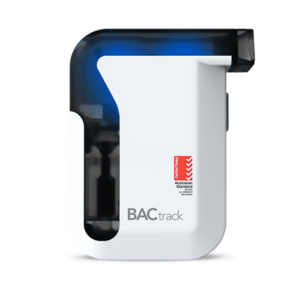Mouth Swab Drug Test: Definition, Collection Process & Accuracy
16 November, 2023

A mouth swab drug test is a method of testing for the presence of drugs in the system of a person. The collection of the sample is a relatively simple and non-invasive procedure involving swabbing the oral cavity to collect a sufficient saliva sample. The swab indicates the presence of drugs within minutes through colour changes or the appearance of lines. Typically, a professional administrator or supervised personnel conducts the test to ensure the accuracy of the results.
There are various methods of drug testing, including urine tests, blood tests, and hair tests. However, many organisations prefer saliva drug tests due to their ease of administration and collection techniques. This makes them particularly useful for situations such as roadside drug testing, workplace drug testing, and sports assessments. This article provides an overview of saliva drug tests, including the process of collecting samples and the accuracy of the results.
What Is a Mouth Swab Drug Test?
A mouth swab drug test is a type of drug screening method that involves collecting oral fluid samples from the mouth. It is a quick and less invasive way to detect the presence of drugs in the system of the individual. Consequently, employers, law enforcement agencies, and other organisations often use this type of drug test to determine if an individual has been using drugs.
During this test, a small cotton swab is placed in the mouth of the person and swiped along the inner cheek and gum line. The swab collects samples of saliva, which is then analysed for the presence of illegal drugs. This testing method can detect a wide range of drugs.
One of the advantages of saliva tests is that it is relatively quick and easy to administer. Unlike urine tests, hair tests, and blood tests, which may require a visit to a lab or medical professional, a saliva drug test can be done on-site and provide results within minutes. Additionally, this type of test can detect recent drug use, as drugs typically remain detectable in saliva samples for a shorter period.
Commonly Detected Substances
- Ethanol: a type of alcohol found in alcoholic beverages.
- Amphetamines: a group of stimulant drugs that increase activity in the central nervous system.
- Barbiturates: a class of drugs that act as central nervous system depressants.
- Opioids: powerful pain-relieving drugs that interact with opioid receptors in the brain.
- Cocaine: an illicit drug from the coca plant. It increases dopamine levels in the brain.
- Cannabis: a plant that contains psychoactive compounds called cannabinoids.
- Methamphetamine: a potent central nervous system stimulant that boosts energy and focus.
- Benzodiazepines: a class of medications for anxiety, insomnia, and muscle relaxation.
- Phencyclidine (PCP): a hallucinogenic drug that can cause distorted perceptions.

Sample Collection Process of a Mouth Swab Drug Test
The process of collecting a sample for a mouth swab drug test involves several steps. Initially, the test administrator takes a sterile swab to start the swabbing process. Then, the administrator gently places the swab between the cheek and gums or under the tongue, allowing it to absorb saliva for a few minutes. This ensures that they can collect a sufficient sample for accurate drug testing.
Upon saturation, the collector will place the swab stick in the kit for analysis. It will change colour or show several lines if it detects alcohol or illicit drugs within minutes. Meanwhile, in confirmatory testing, the collector will send the specimens to a laboratory for analysis. Furthermore, other collection procedures include spitting into a container.
At the laboratory, trained professionals who follow strict protocols will handle the sample to maintain the integrity of the test. They will use various methods to detect the presence of drugs or metabolites in the saliva. The result is then provided to the appropriate parties for review and further action if necessary.
Detection Window
The drug detection window for oral drug tests varies based on various factors. Generally, these tests can detect substances within a time frame of 12 hours after drug use. However, multiple factors can influence this detection period.
For instance, the type of drug plays a crucial role. The test can identify cannabis in oral fluid samples for up to 14 hours after consumption. Meanwhile, it can identify methamphetamine for around 24 hours. In addition, the frequency and amount of drug use can impact the detection window. Regular or heavy drug use may prolong the detection times.

Accuracy of Results of a Mouth Swab Drug Test
The accuracy of results from a mouth swab drug test is highly dependent on following the guidelines provided. A professional administrator or supervised personnel typically conduct this test to ensure its correct execution. Additionally, this level of supervision makes it more difficult for the person to tamper with the specimen.
However, various factors can influence the accuracy of the test. Firstly, the sample collection process. Insufficient sample collection can lead to an inadequate amount of saliva being tested, which may result in inaccurate results. Secondly, contamination of the sample can affect accuracy. If the swab comes into contact with other substances, such as food particles or bacteria, it may alter the results.
Lastly, external factors such as the quality and storage of the test kit can also impact accuracy. Expired, damaged, or improperly stored fluid testing kits can compromise the reliability of the results. Therefore, it is crucial to ensure the drug test kit is in good condition and within its expiration date before conducting a mouth swab test.
Is There a Possibility of a False Positive?
When using fluid drug testing, there are possibilities of false positive results. One reason is the non-specificity of the test itself. Some fluid testing devices are not designed to only react to a specific drug; instead, they may react to a range of substances. This lack of specificity can potentially lead to false positives.
Another factor is cross-reactivity with medications. Certain medicines and herbal supplements might share structural similarities with the drugs being tested for. When an individual has recently used these substances, they can cross-react with the antibodies in the test. As a result, the test may produce a false positive.
Conclusion
In conclusion, a mouth swab drug test is a quick and simple method for detecting drug use by collecting saliva samples. The process involves a sterile swab placed in the mouth, absorbing saliva. The kit changes colour or shows lines if drugs are present within minutes. This non-invasive and applicable on-site testing approach offers fast results, making it a convenient choice for employers and organisations concerned about recent drug use.
The detection window for oral drug tests spans 12 to 24 hours. However, this timeframe varies based on factors such as the type of drug and the frequency of usage. Furthermore, the accuracy of results relies on strict adherence to guidelines and professional administration. Challenges to accuracy include insufficient sample collection, sample contamination, and issues with test kit quality and storage. Following the proper procedures is crucial for reliable results in oral drug testing.






























